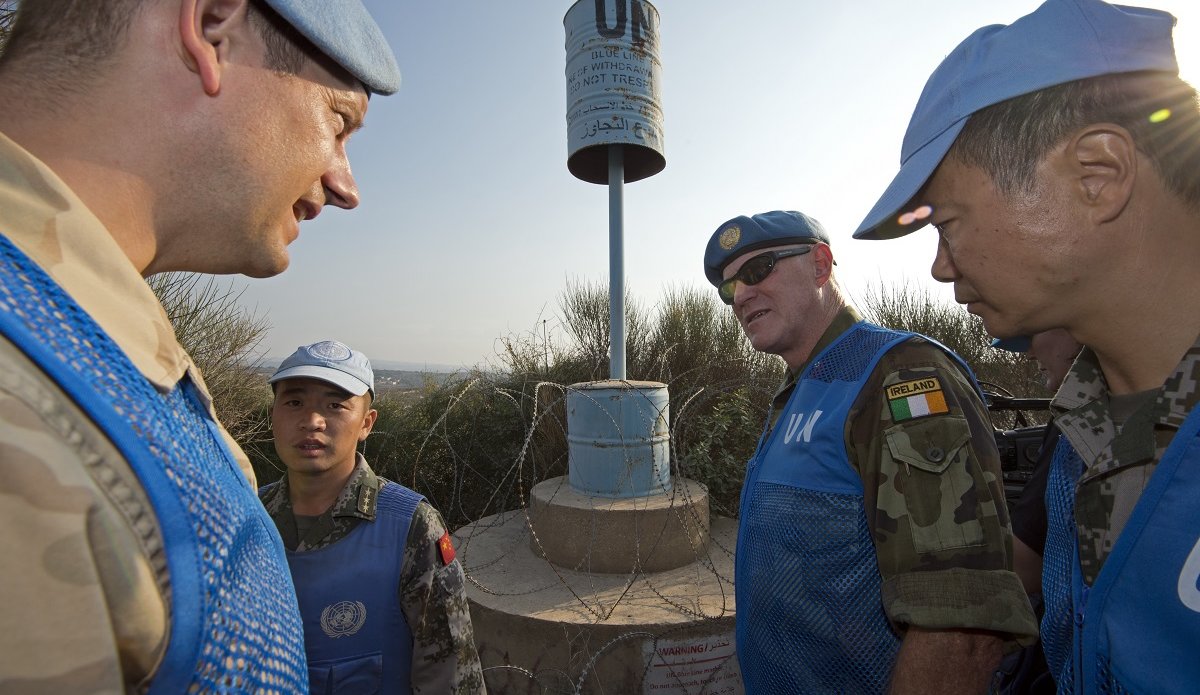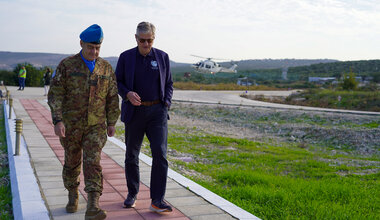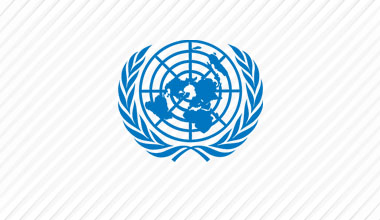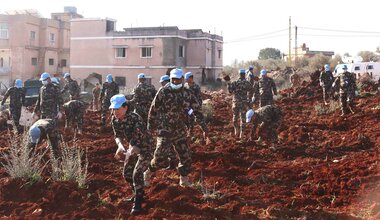UNIFIL’s Chief Inspects Mine Clearance Work
The demined path to one of the most recently agreed Blue Line points in Blida, south Lebanon, is wide and clearly marked. Even so, UNIFIL’s Head of Mission and Force Commander, Major-General Michael Beary, must wear a protective vest and helmet with a visor before inspecting it.
UNIFIL’s chief is visiting two locations along the Blue Line to meet and observe the ongoing work UNIFIL’s Mine Clearance Teams (MCT’s) from Cambodia and China are doing. Major Stein de Schepper, UNIFIL’s Demining Staff Officer explains “We wanted to show the Force Commander what different types of work these deminers are doing. On the one hand we have demining, on the other side refurbishment.”
After a short briefing, the head of the UN’s peacekeeping mission in Lebanon is taken along the path hemmed clearly by bright red “Danger Mines” signs. The precise and careful work the MCT’s do to clear a safe cut lane through the mine field is evident. This work is critical as, after the cut lanes are cleared of mines, UNIFIL’s combat engineers access the points to erect a Blue Barrel.
At the next Blue Line position near Yarin, the path to the Blue Barrel is barely visible. Here Major-General Beary is shown the ongoing refurbishment work UNIFIL does along the Blue Line. Major de Schepper provides some context, “As you can see behind me, the vegetation sometimes takes over the Blue Line point. In order to upkeep the visibility UNIFIL is now getting rid of all the vegetation so the visibility of the Blue Line point remains as it was before. In this year alone we have already refurbished 189 points, and we are still continuing, so by the end of the year all of the rest of the points will be refurbished.”
At each location UNIFIL’s Head of Mission and Force Commander acknowledges the work these mine clearance teams and combat engineers do, “The Blue Line is such a sensitive issue to both countries, and it’s a strategic issue. And your work is helping to ensure that it doesn’t become tense and that we can use the Blue Line as a reference. So everything you do is important. It’s very valuable work. I really am proud of what you do here, but please don’t take any shortcuts on safety. There is no rush, so please do your work carefully. Thank you very much.”
Background:
The Blue Line is the line of withdrawal identified in the year 2000 by the United Nations, in cooperation with Lebanese and Israeli officials, for the purpose of confirming the withdrawal of Israel Defense Forces (IDF) from Lebanese territory. The Blue Line is not the border between Lebanon and Israel. Since 2007, with the consent of both parties, UNIFIL has embarked on a project to visibly mark the line on the ground. The blue barrels directly contribute to the security of the people living on both sides of the blue line by preventing inadvertent crossing. To date 257 barrels have been constructed and 238 have been verified.
----------------------------------------------------------------
Article: Aoibheann O'Sullivan
Video Editor: Aoibheann O'Sullivan, Rania Bdeir
Video Camera: Aoibheann O'Sullivan
Photo: Pasqual Gorriz
----------------------------------------------------------------
 UN
UN United Nations Peacekeeping
United Nations Peacekeeping












